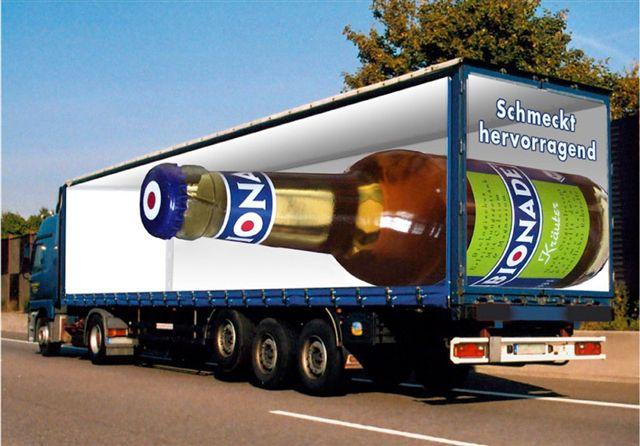Introduction
Human communication, as the main means of interrelation and cooperation between people, also makes use of the set of signs, which can be verbal, non-verbal, text, iconic, etc. All the variety of these signs is studied by semiotics, or semiology, as derived from the concept of “seme” denoting the meaning of a lexical unit or any other communicative sign (Aiello, 2007). In the area of semiotics, the interpretation of signs, and images as one of the most often embodiments of the signs, is of crucial importance for understanding such concepts as denotative and connotative meaning, and their interrelation. This paper will focus on the system of submitting the “image to the spectral analysis of the messages it may contain” (Barthes, p. 33) offered by Barthes as a means of image interpretation.
Barthes’ Ideas
To begin with, Barthes’ (1991) argument is concentrated around the three dimensions, or messages, through which every image can be interpreted and “read”. These dimensions are the linguistic, coded iconic, and non-coded iconic messages. In their context, the author also pays attention to the ideas of connotative and denotative meanings of the images singling out the signifiers and the phenomena signified as the major distinguishing features between the two meanings (Aiello, 2007). Proper consideration of all these levels of the image analysis, provides the analyst with a comprehensive picture of what the image actually presents, what are the hidden, or implicit, meanings it is intended to render, and what are the functions of text, i. e. lexical message, in the image (Barthes, 1977).
Beginning with the textual context, it is necessary to note that Barthes (1977; 1991) argues about the priority of a denotative meaning over the connotative one. As a result, text, as a means of the introduction of the information about the image, is viewed as the initial element of the latter directed at catching people’s attention and guiding their further considerations of the image. In more detail, Barthes (1977; 1991) singles out two main functions the lexical message fulfills in an image. They are anchoring and relaying. The former function deals with the already mentioned guiding people’s attitudes towards the image. The latter provides the image spectators with the necessary cultural or social knowledge to correctly interpret the image in its specific context (Chandler, 2009).
Further on, the coded iconic message is the connotation that each person has while viewing the image under consideration. Four signs are further singled out by Barthes (1977; 1991) in this message. The first among them is the sign reflecting the impression the image makes on the viewers. Exemplifying his argument with an advertising photo of Panzani products, Barthes considers freshness, returning from the marker, and anticipation of a perfect dish as the reflection of the first sign. The second sign Barthes considers in this aspect is the symbolism of the image, i. e. the way in which the objects in the image are located, colored, etc. to create a certain effect on the viewers. In this respect, the concept of “Italianicity” is coined by Barthes (1977) to denote the cultural knowledge typical of a nation and alien to other nations, which is necessary for the correct interpretation of an image’s coded iconic message. The third sign to mention is the sum of the symbols in the image as a whole, and the fourth one is the type of image considered, including still-life picture, landscape, portrait, etc (Chandler, 2009).
The last sign of the coded iconic message is close in its meaning to the non-coded iconic message as the latter renders the actual objects copied, or imitated, in the image. In other words, if a can is pictured in the image considered, then the non-coded iconic message of this image will be the representation of a can. To exemplify his points, Barthes (1991) resorts to the cases of the Panzani advertisement and an issue of the French magazine Paris-Match. Speaking about the non-coded iconic messages of the former, Barthes summarizes it as an open bag with the packs of pasta and a can fall from it to the table. The latter image is interpreted as a portrait of a boy of African origin who stands in the French uniform and salutes with the inspired expression of his face.
In contrast, if the coded iconic message were considered, the latter image would mean the patriotism and the multinational character of the French nation in its striving to shape a highly-developed and respected country (Barthes, 1991). Here, Barthes again addresses the ideas of the connotative and denotative meanings to conclude that “’denotation is not the first meaning, but pretends to be so; under this illusion, it is ultimately no more than the last of the connotations” (Barthes, p. 9). Drawing from this, it is possible now to carry out the interpretation of the selected images according to Barthes’ ideas.
Analysis
Non-Coded Iconic Message
Thus, as Barthes uses advertising photos to exemplify his argument about the three messages lying in every image, the first photo under analysis will be an advertising image. Retrieved from the MIndhacks website, it is an advertising picture of a beer production company in Germany. The very image consists of a lorry carrying a huge bottle of beer and the lines in German reading “Schmeckt hervorragend”, which can be translated as “Tastes Wonderful” in English (Lorry, 2006). The analysis of the non-coded iconic message of Lorry can be limited to the above description with the only addition that the setting of the image that it was taken on a sunny day on a road with the trees on its side. However, such an analysis would be way too incomplete according to Barthes. Drawing from this, the lexical message of the image should be considered:

The second image under analysis is, however, an artistic photo, which is used here to show that Barthes’ analysis is applicable to all images, not advertising ones only:

The picture by Flynn is a bright example of landscape photographing (Flynn, 2003). It depicts the sunrise on one of the Thailand mornings and has no actual advertising or any other business aim. It is pure art, which however can be interpreted in terms of coded and non-coded iconic messages. The latter consists in the picture of the yellow early morning sky with the rising sun, on the background of which the forest silhouette can be observed. The very picture is made from a hose, whose doors and porch can also be observed in the image (Flynn, 2003). Thus, the non-coded iconic message of the image lies in the description of nature as perceived by the photographer (Van Leeuwen, 2001).
Lexical Message
The lexical message is absent from the image by Flynn as far as it is destined for observation but not for informing the viewers (Flynn, 2003). However, there are two text items in the Lorry image, one of them being the inscription on the backside of the lorry, and another one being the title of the beer inscribed on the bottle (Lorry, 2006). The anchoring function of both texts is introducing the viewers into the context (Van Leeuwen, 2001), i. e. making them familiar with the fact that it is a beer that is advertised. Relaying explains that the beer is German as the inscription language shows, and it is wonderful in taste, which is the most important for the viewers to know. Thus, the lexical message of the image shows that certain intercultural understanding is necessary to interpret it, and involves the concept of “Italianicity”, i. e. knowledge about the culture (Barthes, 1991) of the country where the image, or the phenomenon it advertises, was produced.
Coded Iconic Message
Accordingly, the coded iconic message comes into play with “Italianicity”, or “Germanicity” as it could be called in the view of the German culture involved in the Lorry image (Lorry, 2006). The first sign of the coded iconic message shows that on a hot day one can get plenty of beer from the company promoted by this image. The contrast of hotness and refreshing liquid contained in the lorry creates the impression of the crucial saving force of the image advertised. Freshness is a leitmotif of the second image as well. The fresh morning air is the sign of the time of the day when the heat has not come and people can enjoy the warm and simultaneously cool Asian climate (Flynn, 2003). Symbolism, as the second sign, is represented in the Lorry image through the exaggerated size of the beer bottle placed in the lorry. Obviously created with the help of specialized computer software, this image embodies the great importance that the viewers should attribute to the product advertised. The coded iconic image tells the story of numerous people, who are thirsty on a hot day, and the large lorry is carrying their salvation – they can satisfy their thirst with the fresh and cold beer from one of the best German breweries (Lorry, 2006).
Flynn’s image also displays symbolism as if presenting Asian sunrise as the beginning of the new life. East is where the sun rises, and Asian countries have always been associated with these processes like the ones situated in the East (Flynn, 2003). The sum of all signs of the coded iconic image adds to the credibility of both images as the ones that “are full, formed with a view to the optimum reading” (Barthes, p. 33). Thus, both images appeal to nature and the eternal human desire to live in harmony with it. Depicting the most attractive manifestations of natural beauty, either as such or in the context of human-made products, both images praise harmony between human beings and nature.
Conclusions
To conclude, signs and images are basic phenomena in human communication. Semiotics as the science studying these phenomena benefits greatly from the scholars’ attempts to interpret signs and images to understand the objective reality better (Kress & Van Leeuwen, 2006). Barthes’ approach to the image interpretation can be called a “three-message” one for its focus on the lexical, coded iconic, and non-coded messages that every image tends to render. The comprehensive study and understanding of these messages allow realizing the intended meaning of the image, its effect on the audience and the actual, non-coded, meaning.
Reference List
- Aiello, G. 2007, ‘Critical Visual Analysis and Semiotics’, Journal of Visual Literacy, pp. 1 – 22.
- Barthes, R. 1977 Image/Music/Text, New York: Hill and Wang, 1977, pp. 33-7
- Barthes, R. 1991 The Responsibility of Forms-Critical essays on Music, Art, and Representation. University of California Press.
- Chandler, D 2009, ‘Denotation, Connotation and Myth’, Semiotics for Beginners.
- Flynn, M. 2003, Creative Artistic.
- Kress, G., & Van Leeuwen, T. 2006, Reading images: The grammar of visual design (2nd ed.).New York: Routledge.
- Lorry. 2006, Mindhacks.
- Van Leeuwen, T. 2001, Semiotics and iconography. In T. van Leeuwen & C. Jewitt (Eds.), Handbook of Visual Analysis (pp. 92-118). London: Sage.